Ewart Oakeshott: The Man and his Legacy: Part III
An article by Chad Arnow,
Russ Ellis,
Patrick Kelly,
Nathan Robinson, and
Sean A. Flynt
Compiled and produced by Nathan Robinson
Page 3 of 5 — Go to: Prev 1 2 3 4 5 Next
The part of a sword on the opposite end of the grip from the guard and blade is called the pommel. The wide variety of pommels in use in the Middle Ages, which he termed "almost limitless," led Oakeshott to create a separate typology to deal with them. Oakeshott based the pommel typology on those found on the immediate descendants of the Viking sword, much in the same way he did with his blade typology. He grouped pommels into 25 basic types, some having a subtype. They are designated with letters and have numbers following to denote a subtype (For example: Type T1).
As with blades, pommels do not always fit neatly into these categories, if they fit at all. Adding to this problem is that pommels were often decorated by adding engravings, gilding (with gold or silver), enameled plates, coins, etc. Some examples are used as reliquaries, holding religious relics.
Type A |
Type B |
Type B1 |
Type C |
Type D |
Type E |
Type F |
Type G |
Type G1 |
Type G2 |
Type H |
Type H1 |
Type I |
Type I1 |
Type J |
Type J1 |
Type K |
Type L |
Type M |
Type N |
Type O |
Type P |
Type Q |
Type R |
Type S |
Type T |
Type T1 |
Type T2 |
Type T3 |
Type T4 |
Type T5 |
Type U |
Type V |
Type V1 |
Type V2 |
Type W |
Type Z
| Type A |
Type B |
Type B1 |

Brazil-nut form. Type A is a development of the earlier Viking pommel forms. It is often very wide; as much as 4 inches across.
|
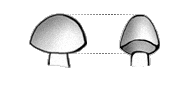
Brazil-nut form. This is a more rounded version of Type A, being shorter and fatter. Examples are not very common.
|
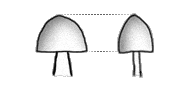
Mushroom or "tea-cozy" form. This subtype resembles the Type B shape, but without the rounded lower edge.
|
|
| Type C |
Type D |
Type E |

This type is a later ancestor of the Viking-styled pommel known as the "cocked hat" form and is made in a single piece.
|

Type D is a bulkier form of the previous type and being of a slightly later date.
|
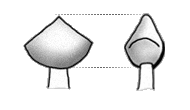
Similiar in form to the previous example but with a more angular top-section, and occasionally having a pronounced mid-rib.
|
|
| Type F |
Type G |
Type G1 |
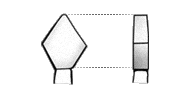
This is a more angular form of Type E, popular during 1175-1275.
|

Type G is disc-shaped, generally having rounded faces and being 1/2" to 1" inch thick. Some examples on swords dating after 1400 have concave faces.
|
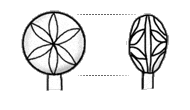
This is a strongly convex disc-shape, looking like a squashed globular form and having flower-like designs on its surfaces. Appearing in the second quarter of the 15th century, it seems to be a purely Italian style.
|
|
| Type G2 |
Type H |
Type H1 |

Contemporary to the previous type and purely Italian also, this version has scallopped fluting incised on its faces.
|

Another disc-shape but with chamfered edges. Perhaps the most common of medieval forms, it is found on swords from the 10th through 15th centuries.
|

This appeared circa 1350 and lasted until the early 15th century. In profile, its faces are usually concave, but occasionally flat.
|
|
| Type I |
Type I1 |
Type J |

Another of the disc forms, in this one the faces are smaller with broad chamfers that widen to the radius of the pommel. This type was popular in the middle of the 13th century, although there are earlier examples.
|

Often made of bronze or latten. This type is the same as Type I except that the broad chamfers have been cut into hexagonal or octagonal facets. This type was popular in the 14th and 15th centuries.
|

Very similar to Type I, however the chamfers have been hollowed out. Popular from mid 13th century to mid 15th century.
|
|
| Type J1 |
Type K |
Type L |

Another disc pommel variant, this one has two discs: a flatter outer disc and a raised inner disc. This type is often found on English swords.
|

Very similar to Type J pommels but wider and flatter. This type was common at the end of the 13th century and through the middle of the 14th century with a brief resurgence in appeal at the end of the 15th century.
|
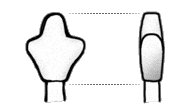
A very uncommon trefoil type. Only one extant original has been identified. This type is though to be Spanish.
|
|
| Type M |
Type N |
Type O |

This is the last holdover of the old Viking "lobed" pommels and a distinctly English type. Popular in England in the 13th and 14th centuries.
|

A "boat shaped" pommel. This type seems to have been fairly common in period art suggesting that it was a popular type. Few surviving examples can be found.
|

This can be best described as a crescent in shape. The type seems to have been very rare. There are few examples in period art. There are almost no surviving examples.
|
|
| Type P |
Type Q |
Type R |
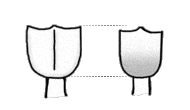
This is another exceedingly rare type. There seem to be no surving examples. In art there is only one on a statue on a cathedral in Nuremburg, Germany. The Type P appears to be "shield shaped."
|

These floral pommels are often found on Type XIV swords in art but, again, we have no surviving examples. This type appears to have been used from the late 13th through the early 14th century.
|
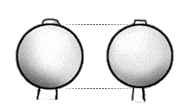
This pommel type is spherical and, again, appears to have been rather unusual although more common than Types N through Q. Most examples seem to come from the 9th through 10th centuries however there are existing examples from as late as the 16th century.
|
|
| Type S |
Type T |
Type T1 |
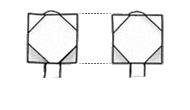
This pommel type is a cube form with the corners beveled off. It seems to date from the early 14th century, and again is more common than Types N through Q but still fairly rare.
|
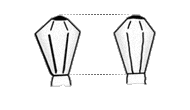
This is one of the "scent stopper" types. It is generally faceted with a wider top which tapers towards the grip. Scent stopper pommels were common from the mid 14th century through the 16th century.
|

One of the "scent stopper" forms, this one is described as being a "truncated wedge." It is rarer than the other Type T forms.
|
|
| Type T2 |
Type T3 |
Type T4 |

This form of the "scent stopper" type seems to have been used exclusively on swords of Type XVII.
|
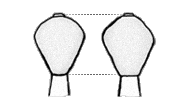
This is another of the "scent stopper" types although this one has been so truncated that it is almost pear-shaped. The pommel often exhibits ribs or fluting. It seems to be an English type and was popular only in the early part of the 15th century.
|
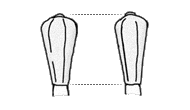
This "scent stopper" type has been elongated. In other respects it is identical to the parent Type T.
|
|
| Type T5 |
Type U |
Type V |
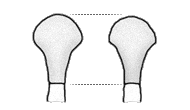
This is a later "scent stopper" type and seems to have been popular only in the 16th century.
|
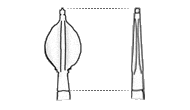
This is the "key shaped" pommel type which seems to have been popular in the mid to late 15th century.
|
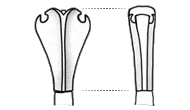
This is often called the "fish tail" type pommel. The type seems to have been confined to Northwestern Europe and also seems to have been fairly uncommon if not exactly rare. It seems to have been in use for most of the 15th century.
|
|
| Type V1 |
Type V2 |
Type W |
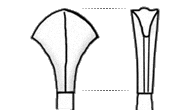
In contrast to the parent type, the Type V1 seems to have been an exclusively Italian type which was in use during most of the 15th century. The top of the pommel has concave edges which flare out strongly and then taper to the bottom of the pommel.
|

This type is described as a rounded and blunted version of the Type V1: that is, the top edges do not flair out as strongly.
|

A misshapen wheel pommel variant, this pommel type appears to be a wheel pommel that has been somehow stretched toward the top of the pommel. These pommels seem to have been in use from the 12th through the 14th centuries.
|
|
| Type Z |
|
|
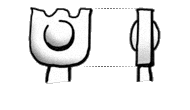
This type is commonly called the "cat's head" pommel and seems to be an exclusively Venetian or Dalmatian type. It consists of a rounded bottom which extends to a slightly crenellated top. The central boss often bears the representation of an animal or human visage on its face.
|
|
|
|
 Continue to Part 4 Continue to Part 4
Sources
Archaeology of Weapons: Arms and Armour from Prehistory to the Age of Chivalry, The, by R. Ewart Oakeshott
Sword in the Age of Chivalry, The, by R. Ewart Oakeshott
Records of the Medieval Sword, by R. Ewart Oakeshott
European Weapons and Armour: From the Renaissance to the Industrial Revolution, by R. Ewart Oakeshott
Sword in Hand: A History of the Medieval Sword, by R. Ewart Oakeshott
Acknowledgements
Most of the accompanying text written by Chad Arnow
Typology in Detail table data and the pommel/cross descriptions supplied by Russ Ellis
Typology illustration created by Nathan Robinson and based on the work of Ewart Oakeshott
Sword line drawings created by Nathan Robinson, based on swords from Records of the Medieval Sword
Pommel, cross, grip, and sword family line drawings created by Nathan Robinson, based on the work of Ewart Oakeshott
List of published works created by Patrick Kelly
Contributions and fact checking provided by Craig Johnson of The Oakeshott Institute
Editing tasks provided by Nathan Robinson, Chad Arnow, and Sean Flynt
Production services provided by Nathan Robinson
Additional Information
Please see our Spotlight Articles on each Oakeshott sword type:
Type X, Type XI, Type XII, Type XIII, Type XIV, Type XV, Type XVI, Type XVII, Type XVIII, Type XIX, Type XX, Type XXI and XXII
|
|